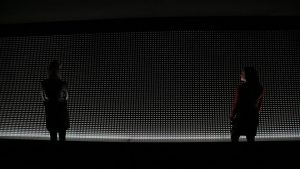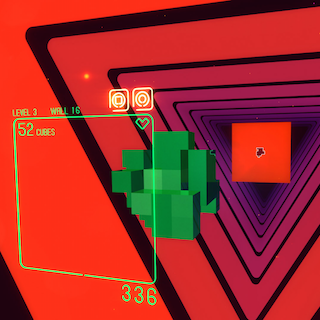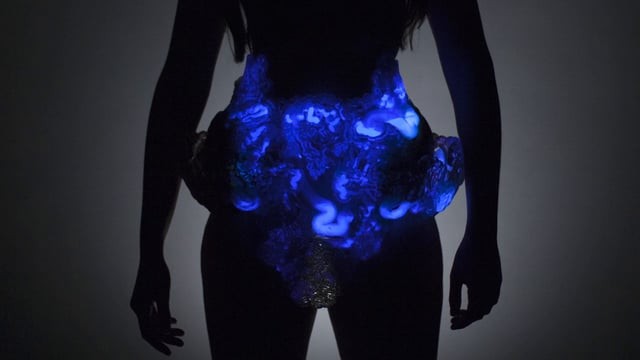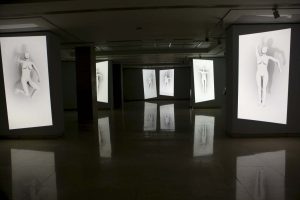“Hyphen-Labs is an international team of women of color working at the intersection of technology, art, science, and the future.”
I remember looking at this collective when researching the Eyeo Festival artists. I wanted to go back to them and learn more about their work as a product of collaborative work between women.
The project below, Prismatic_NYC, is a kinetic sculpture above the The High Line in New York City.
Prismatic_NYC_BTS from hyphen_labs on Vimeo.
The project contains 66 individual prisms, inspired by the Trivision billboard which consists of triangular prisms rotating to form 3 different images on each face. To generate a nostalgic feeling, and create a new system, Hyphen-Labs tapered each prism and alternated their orientation. Using light and movement, they can completely control the experience of being under this installation.
The performance of Prismatic_NYC can also be programmed and controlled in response to current weather conditions such as cloud cover, wind speed, humidity, and accumulation. These directly change the amplitude, frequency, speed and position offset of the wave form. It is always changing and never the same.
Using generative and parametric design, they were able to optimize the experience of being under this project. This project will be installed for 5 years.
Another project of interest is Painkillers, in collaboration with the National Safety Council and Energy BBDO. This installation features 22,000 pills carved with human faces representing the 22,000 people who died from opioid addiction last year. This rate is continuing to increase, and as an addition to the installation, it continues to carve a new pill every 24 minutes. Using a small mechanical system, they are able to get very precise details on small objects.

Stop Everyday Killers

Carving_in process
Hyphen-Labs, as a collective of women, has the sensitivity and awareness to tackle important social issues through art, computation, and technology. I can’t wait to see what they, and many other women, do next.
**Using grace day 1/3.**


![[OLD FALL 2018] 15-104 • Introduction to Computing for Creative Practice](../../wp-content/uploads/2020/08/stop-banner.png)







